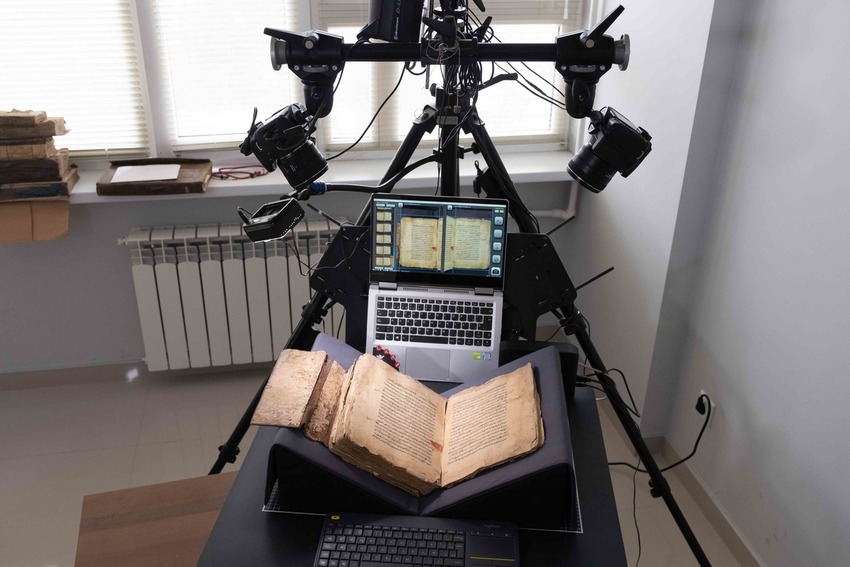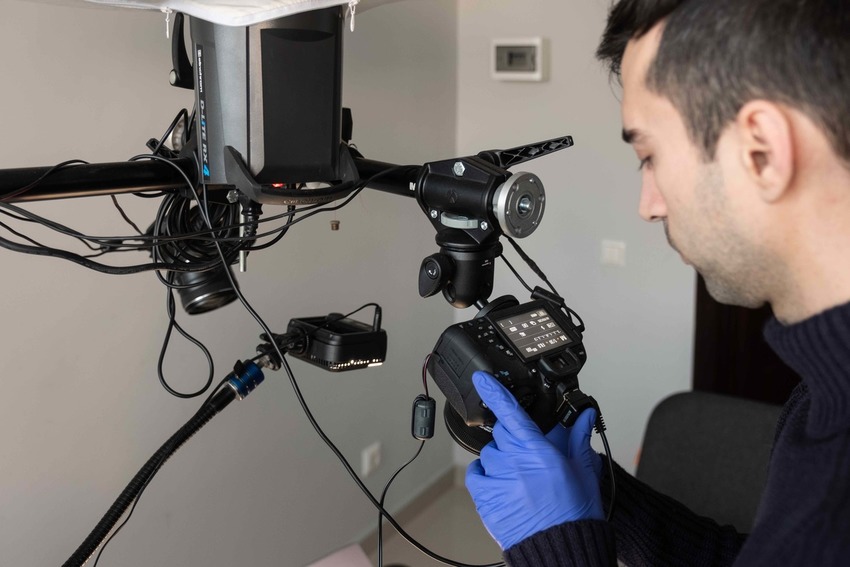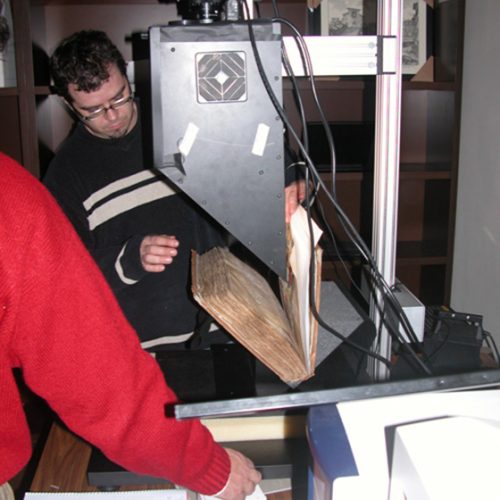Although a number of commercial manuscript scanners exist on the market, it is difficult to find portable systems that produce repeatable, high-quality results. In response to the specific demands of the project, Factum Foundation created a prototype scanner with which IHAE operators can travel into small Dagestani villages, many of which are difficult to reach by car.
The portable scanner combines standard photographic hardware with custom made pieces, all of which are easy to replace or remake – this is important because it means pieces can be quickly and cheaply replaced without the need for specialist assistance.
The scanner is lightweight, easy to assemble, and fast, whilst maintaining a standard manuscript imaging quality of minimum 300 dpi. It can be transported in normal camera bags and one custom-made case. The scanner employs two Canon 7Ds and flash lighting to reduce camera shake and ensure high-quality, repeatable images in any environment.
The flash is synchronised with the two cameras via the custom-made ManuCapture software. The user-friendly app automatically adds metadata tags to the images and downloads them from camera to computer, where they can be checked by the user for errors.

Portable manuscript scanner installed at the IHAE digitisation lab.

Habib Seferbekov from the IHAE working with one the manuscripts in the archive.

The manuscript is placed on a soft v-shaped cradle in preparation for imaging. Plates were not used to flatten the pages in order to keep scanner weight at a minimum.

Then the operator aligns the cameras so that the entire manuscript page is captured in the image

The operator turns the page before shooting the next image using a foot pedal. Images can also be taken within the ManuCapture app.

Image of a double-page seen in the ManuCapture app. The blue ‘image crop’ lines can be manually set by the operator.





